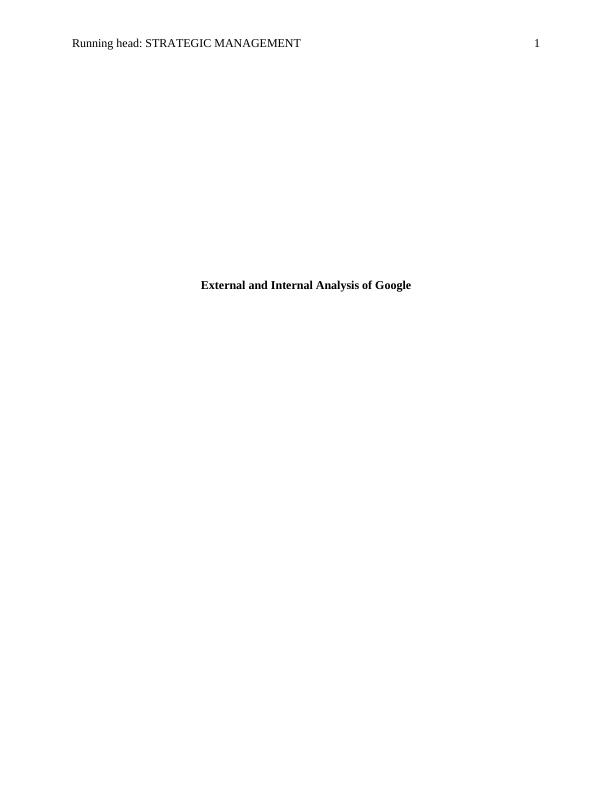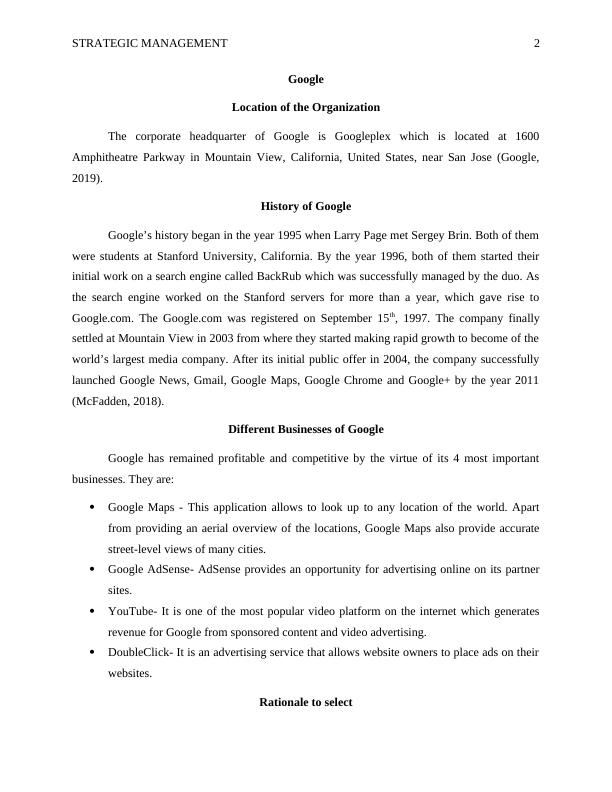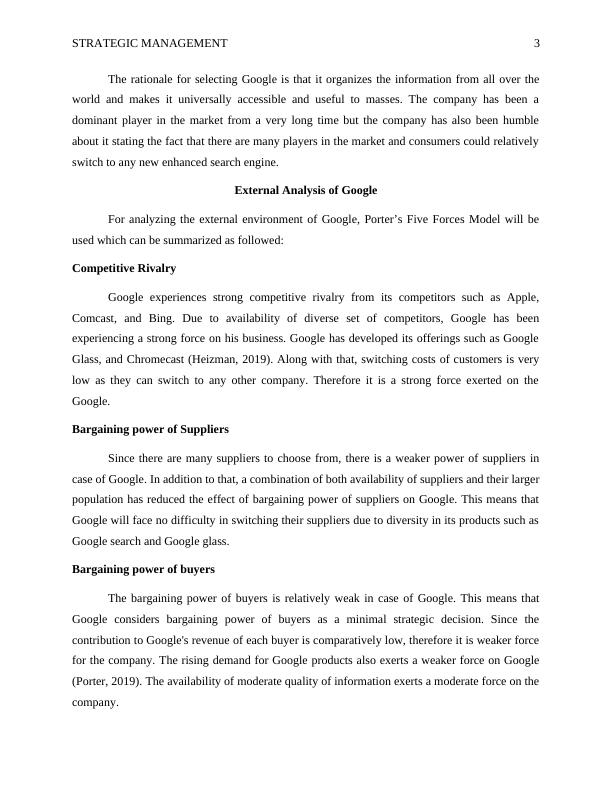External and Internal Analysis of Google
Develop a report on an organization, including its history, businesses within the organization, rationale for selecting the organization, external analysis, internal analysis, list of references, and appendices.
6 Pages1343 Words129 Views
Added on 2023-04-21
About This Document
This article provides an external and internal analysis of Google, including its location, history, different businesses, and a SWOT analysis. It also discusses the competitive forces and threats faced by Google.
External and Internal Analysis of Google
Develop a report on an organization, including its history, businesses within the organization, rationale for selecting the organization, external analysis, internal analysis, list of references, and appendices.
Added on 2023-04-21
ShareRelated Documents
End of preview
Want to access all the pages? Upload your documents or become a member.
Influencing Organisational Strategy - Assignment
|20
|3833
|106
Google Rank Regard to CSR
|9
|2480
|481
Analysis of Human Resource Management Assignment
|20
|5243
|52
Work, Organization and Management: A Case Study of Google LLC
|10
|3041
|407
Analysis of Company's Strategic Position 3 3. Identification of Tools and Techniques: 4 3. Analysis of Company's Strategic Position 3 PART 13
|13
|3966
|211
Managing People and Team
|6
|1409
|436



